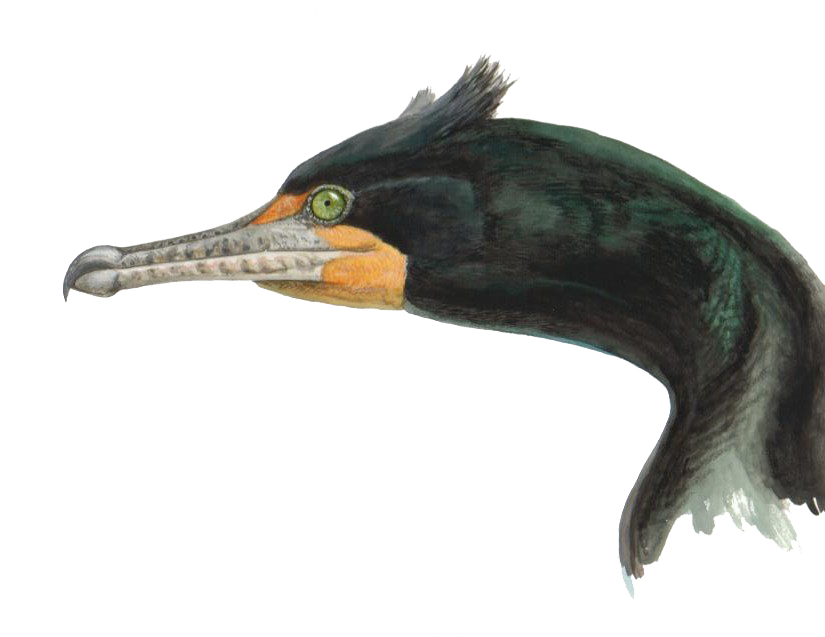The number of migratory bird populations is declining; Keith Hobson, professor and research scientist at Environment and Climate Change Canada and Western University, outlines the importance of updating conventions to protect these vulnerable species
One of the great current challenges of effective wildlife conservation globally involves the protection of migratory organisms that cross international boundaries during their annual cycle. The challenge is obvious when considering the myriad of obstacles involved with international agreements and requirements for on-the-ground compliance, especially when considering different languages, cultures and political systems. Nonetheless, such international cooperation is needed now more than ever as migratory animals have been found to be declining at greater rates than their non-migratory counterparts. That is especially the case for migratory birds. Not surprisingly, apart from regulations involving trade in wildlife or wildlife parts, such as the Convention on International Trade in Endangered Species of Wild Fauna and Flora (CITES), few success stories exist.
An exception is the Migratory Bird Treaty or Convention signed in 1916 between Canada and the United States and implemented in Canada as the Migratory Bird Convention Act (MBCA) of 1917 and in the US as the Migratory Bird Treat Act (MBTA) of 1918 (henceforth I will refer to both as MBTA). Since then, the Acts have been amended several times, and further agreements have been entered into between the US and Canada, Mexico, Japan and Russia. The key statute makes it unlawful to pursue, hunt, take, capture, kill or sell birds or their parts (including eggs, feathers, and nests), and over 800 species are currently listed.

Updating Acts to protect migratory birds
In North America, at least, such agreements have been a huge success and have been instrumental in effectively conserving and enhancing populations of both hunted and non-hunted bird species. Indeed, these Acts are the envy of most other countries faced with similar challenges in managing migratory birds and other wildlife. However, the MBTA is now over 100 years old, and Canada and the US have changed tremendously since the signing. Now of concern are the species left off the list. In Canada, these involve 20 families of birds not named in Article 1 of the MBTA due to several concerns, especially those perceived as being harmful at the time (e.g. raptors, crows, cormorants). While many of these species are protected under provincial or territorial legislation or other federal conventions, it has become clear that modernizing and strengthening the MBTA is now needed to include new families and species and use the Act to counter new threats that were not relevant a century ago. Here, I will mention two examples from North America. The first is the mismanagement of cormorant populations resulting from their exemption from the MBTA. The second is the need to more effectively use this international agreement to better protect migratory birds from new threats, namely those involving incidental take as manifested among other factors in the huge loss of migratory birds due to collisions with windows, buildings and other structures.
The double-crested cormorant (Nannopterum auratus; Figure 1) and all the other cormorant species in Canada and the US are exempt from the MBTA but are technically protected under provincial, territorial and state legislation. As fish-eating birds, cormorants were seen as pests a hundred years ago, and the situation has changed little since as various provinces regularly enact measures designed to reduce their numbers through harassment, egg oiling, or shooting. However, the actions of the Ontario Government in 2021 dramatically changed what was a reasonably defendable compromise in Canada, especially on the Laurentian Great Lakes and adjacent waterbodies in the boreal region of that province. (1) The public was encouraged to shoot up to 15 cormorants per day in the fall as if they were a game species. This was despite no credible scientific evidence linking cormorants to any declines in commercial or sport fisheries and that these birds are not consumed as food by hunters. Sadly, other provinces (and states) are contemplating similar actions despite well-founded opposition. If this species was listed under the MBTA and protected federally, I argue that more scientific conservation and management of this native migratory species could be initiated and maintained.
Collisions on migratory bird routes
The second example follows from a recent editorial by Farnsworth et al. (2024); those authors argue that the MBTA in the US should be used more effectively as an enforcement mechanism to help protect species already on the list and raise the example of birds killed by collisions with buildings that could be mitigated mainly if the MBTA was enforced. (2) Farnsworth et al. cite the situation involving the McCormick Place Lakeside Center in Chicago that caused a spectacularly large collision event on 5 October 2023. Nearly 1,000 birds were killed in a single event, including more than 30 species, during their fall migration across Lake Michigan. That incident was one of many involving this, the largest convention center in North America, which has killed many thousands of migratory birds since its construction. That event was despite a publicly available forecasting system that can accurately predict the nightly passage of migrating birds and provides 72 hours’ notice. In this case, if the lights in the tower were turned off during nocturnal passage, the October event could have been largely avoided. In the US alone, hundreds of millions of birds are killed annually due to collisions like this, and many can be prevented. A study of incidental take across many sectors in Canada (3) estimated 25 million birds killed annually through collisions with human-made structures (4), and that tally has undoubtedly increased since.
Not all collisions are preventable, and great strides are being made using treated glass, screens, and stickers and redirecting or eliminating unnecessary lighting on and around buildings. However, for many significant collision events, especially with buildings on known migratory bird routes and where high-risk evenings can often be predicted, relying on basic goodwill of businesses and corporations is clearly not working. In such cases, and where it can be demonstrated that some negligence of the articles within the MBTA applies, this legislation should be used as litigation. Farnsworth et al. noted that we can do a much better job, starting with the MBTA.
References
- Hobson, K.A. 2021. Ontario’s decision for the province-wide cull of Double-crested Cormorants. Avian Conservation and Ecology 16: https://doi.org/10.5751/ACE-01949-160124
- Farnsworth, A., K.G. Horton and P.P. Marra. To mitigate bird collisions, enforce the Migratory Bird Treaty Act. Proceedings of the National Academy of Sciences 121. https://doi.org/10.1073/pnas.2320411121
- Longcore, T., and P. A. Smith. 2013. On avian mortality associated with human activities. Avian Conservation and Ecology 8(2): 1. http://dx.doi.org/10.5751/ACE-00606-080201
- Machtans, C. S., C. H. R. Wedeles, and E. M. Bayne. 2013. A first estimate for Canada of the number of birds killed by colliding with building windows. Avian Conservation and Ecology 8(2): 6. http://dx.doi.org/10.5751/ACE-00568-080206

This work is licensed under Creative Commons Attribution-NonCommercial-NoDerivatives 4.0 International.


